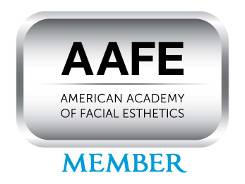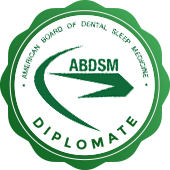What Happens at a Dental Cleaning?

A dental cleaning is key in maintaining good oral health, as it removes any buildup of plaque and tartar, which can negatively affect the entire oral cavity. Things like cavities, gum disease, or abscesses are much more likely to occur if routine dental cleanings are not done, which is why general dentists recommend them twice a year or every six months, at a minimum. Additionally, dental cleanings help to keep the teeth in good shape. Dentists have access to stronger products, which is an advantage when undergoing a dental cleaning.
Understanding what happens during a dental cleaning can be helpful so there are no surprises during the appointment. For the most part, dental cleanings do not induce any discomfort and are relatively straightforward. Still, it is good to become familiar with what to expect. Keep reading to find out more.
Dental cleanings in general dentistry
Below is an overview of dental cleanings, including what happens during a cleaning appointment, which can be helpful to patients.
What to expect
A dental cleaning in general dentistry is one of the easiest but most important appointments because it helps ensure that the teeth and gums remain strong and healthy. Dental cleanings are usually performed by general dentists and their staff, such as a hygenist. The appointment usually does not last longer than an hour. Outlined below are the steps of a dental cleaning.
- The teeth will be flossed, ensuring that any left behind debris or food is removed
- Using a special dental instrument, the hygienist or general dentist will scrape any visible plaque from in between the teeth or along the gum lines
- The mouth will be rinsed out using water, and suction will follow to ensure that nothing gets left behind
- A special dental toothbrush will be used to clean each tooth thoroughly
- Suction and rinsing will follow
- To complete the dental cleaning, another special dental tool will be used to polish the teeth, which helps them shine
Fluoride application is another part of dental cleanings, but it is not always used. If the teeth appear to be weak, the general dentist may follow the cleaning with a quick fluoride application, which is a liquid or gel that is applied to the teeth for a few minutes. Fluoride remineralizes the teeth, which ensures that they are strong and durable, thus reducing the chances that damage will occur.
Regardless of whether fluoride is applied or not, the general dentist advises that patients avoid eating or drinking for 30 minutes to an hour after the appointment is complete. This ensures that the teeth are positively affected by the cleaning.
Other things to note
Most dental cleaning appointments will involve an examination, fluoride application, and possibly X-rays. Examinations and fluoride applications are typically done twice a year, whereas X-rays are only taken once. Individuals who undergo frequent dental cleanings may not always have an exam done.
Generally speaking, most individuals are required to get a dental cleaning twice a year or every six months, though some undergo them more frequently due to either necessity or desire. For example, those who are at a high risk of developing gum disease or cavities may be recommended dental cleanings four times a year or every three months.
Follow-up care
After undergoing a dental cleaning, it is advised to abide by a few recommendations from a general dentist. One should do so in order to maintain the results of what was accomplished during the dental cleaning appointment. Outlined below are a couple of tips to keep in mind.
- Avoid eating anything for at least 30 minutes after a dental cleaning. Allowing the fluoride application to soak into the surface of the teeth will ensure that the treatment does its job.
- If possible, avoid drinking anything for 30 minutes to an hour after a dental cleaning is done. Heavily dyed beverages can stain the teeth, which is why water is always recommended. This also helps to allow the fluoride to properly soak into the surface.
- Practice good oral hygiene in order to maintain the results from the dental cleaning. Brush twice a day, if not after every meal, and floss daily.
Get started with a dental cleaning
It is crucial to undergo a routine dental cleaning every six months. When looking for more information on what happens during one of these appointments, reach out today. Questions can be answered and a dental cleaning can be scheduled to help you maintain good oral health. Give us a call or stop by today!
Request an appointment here: https://artisandentalbellevue.com or call Artisan Dental at (425) 454-2005 for an appointment in our Bellevue office.
Check out what others are saying about our dental services on Google: Dental Cleaning and Examinations in Bellevue, WA.
Related Posts
Dental hygiene and fresh breath go hand in hand, and for many patients, a regular dental cleaning is a crucial part of their oral care routine to have healthy teeth and gums and avoid bad breath, or halitosis.In this article, we delve into dental cleaning and its relationship with bad breath. We explore how routine…
Dentists perform dental cleaning to prevent problems like tooth decay and gum disease. A dental cleaning procedure is more intensive than your daily oral hygiene routine.Read on to find out why aftercare is necessary after a dental cleaning. The following also explains how to care for your teeth after professional teeth cleaning.Dentists advise their patients…
A dental cleaning is performed to remove plaque and tartar that can naturally build up on teeth and along the gum line. The process is non-invasive and takes less than an hour to complete. It is helpful to understand the steps involved with the dental cleaning process before the day of the appointment.While every experience…
Bad breath is a far more common issue than many people realize. Simply because someone does not notice their own bad breath does not mean it is not an issue. The good news is that bad breath is relatively easy to treat and prevent long-term in many cases. One of the best ways to treat…









